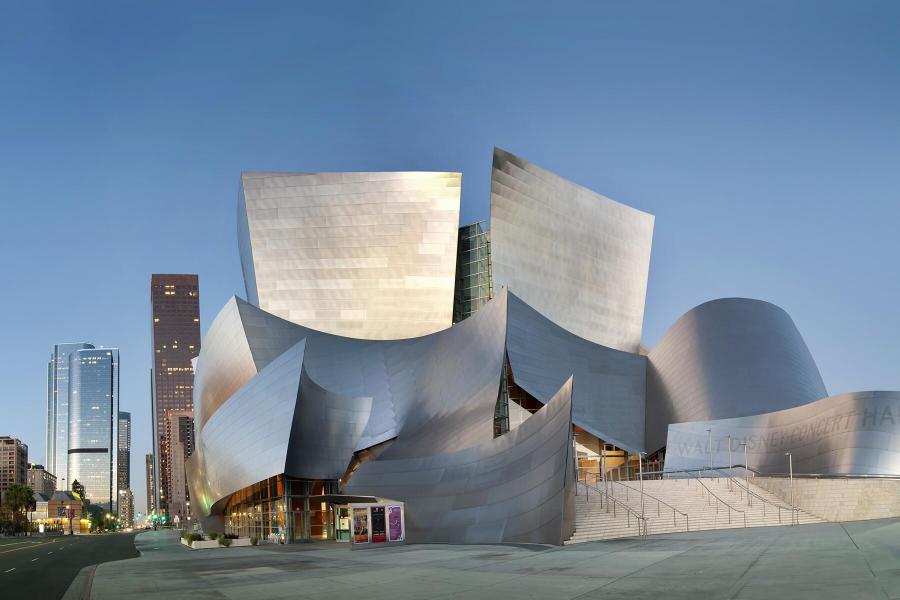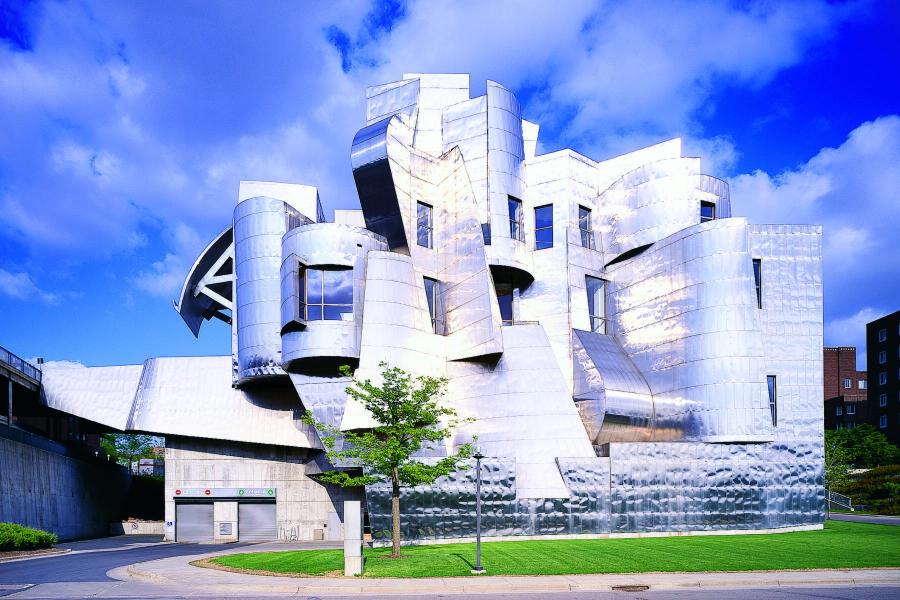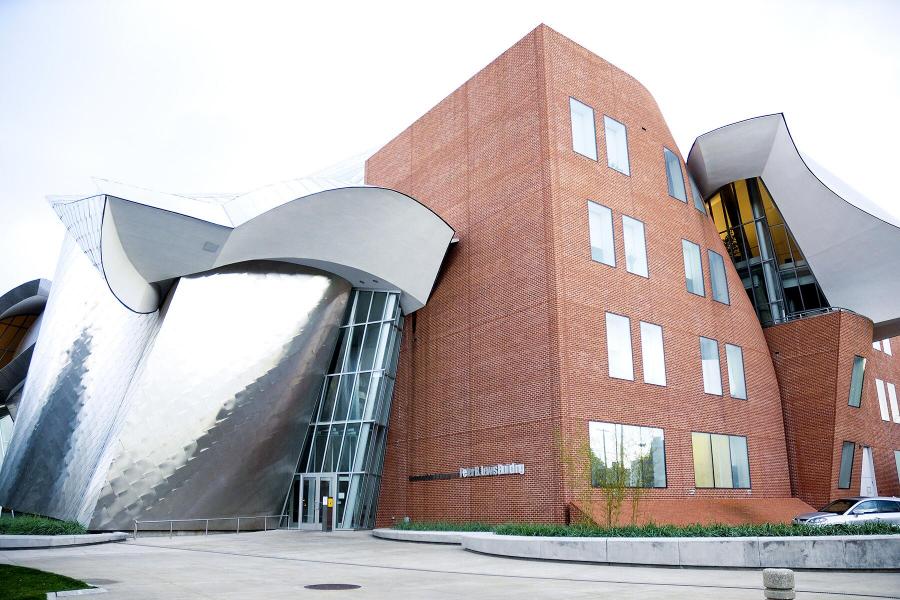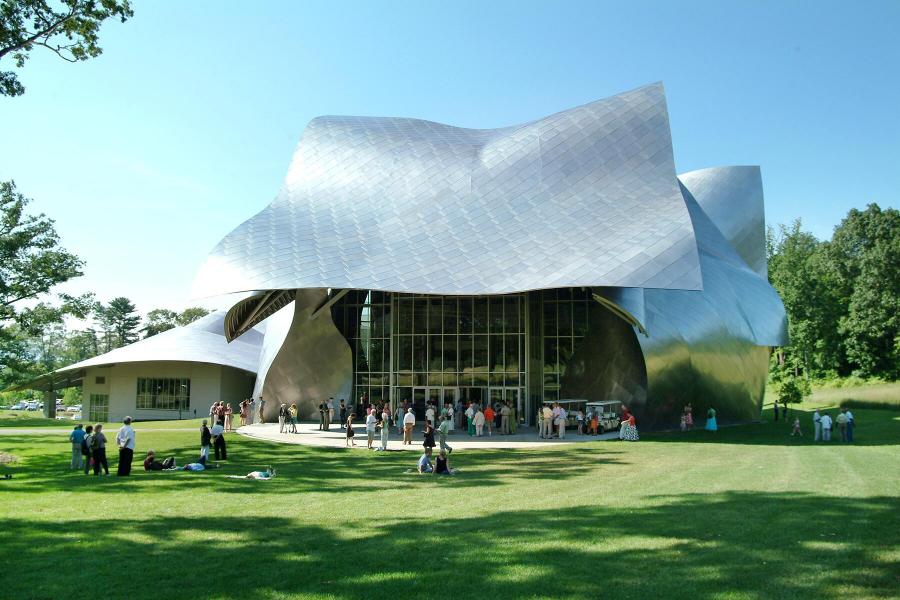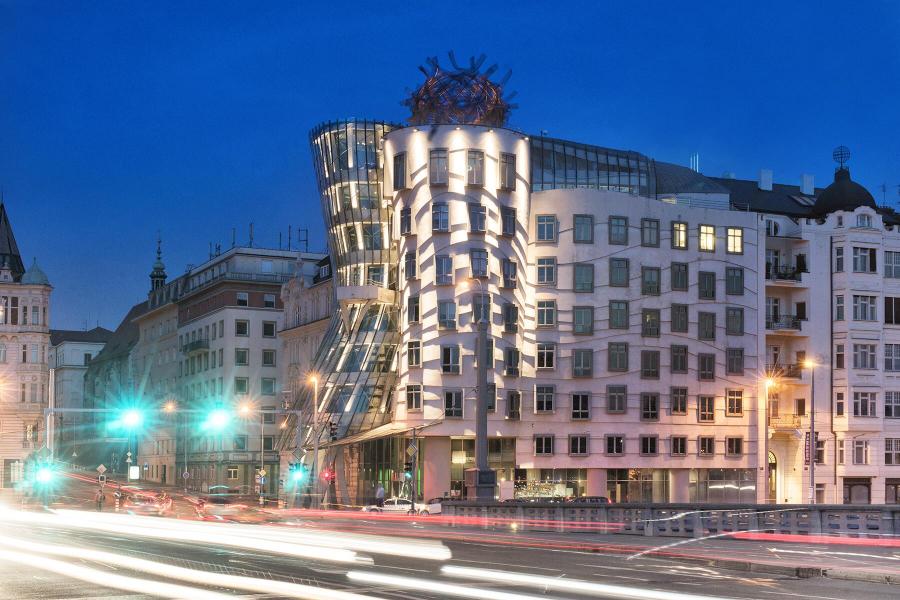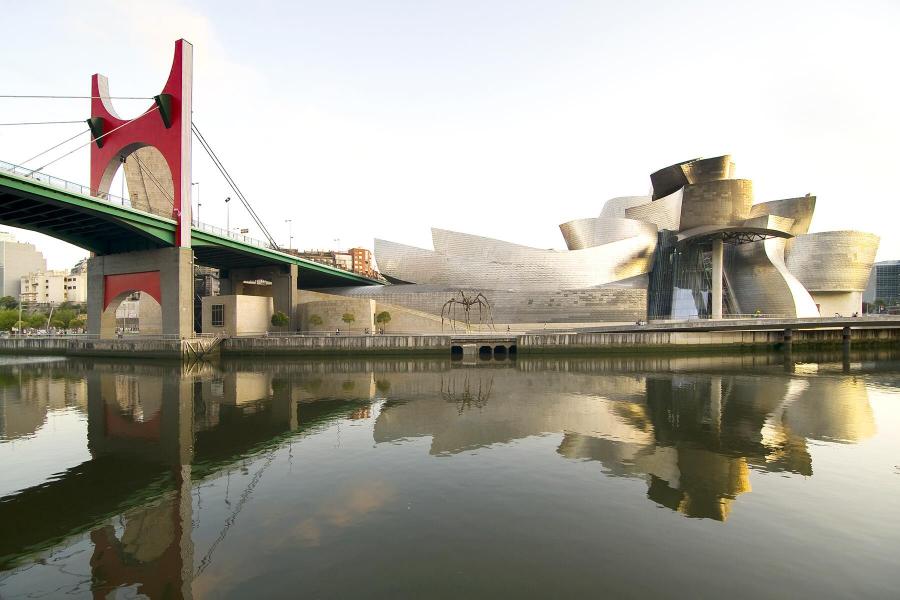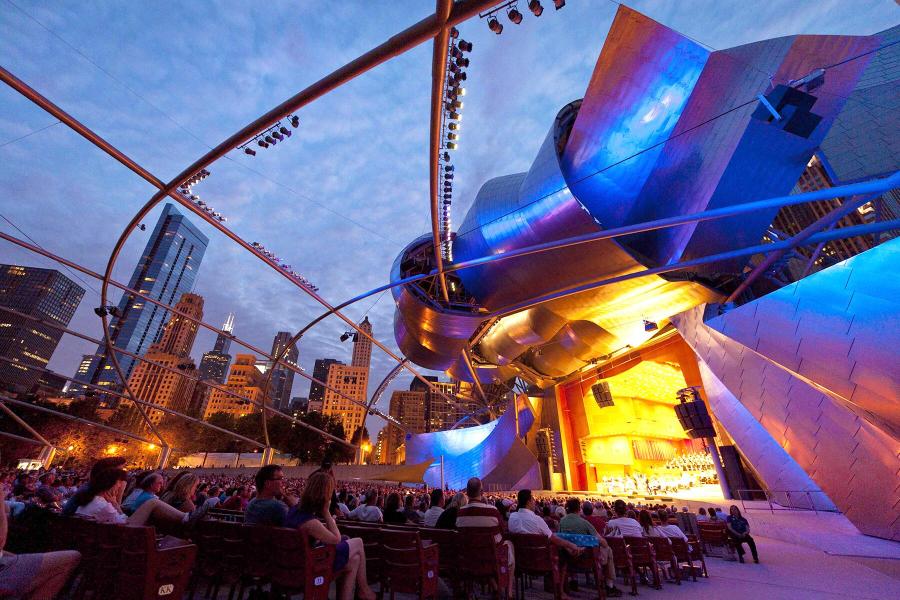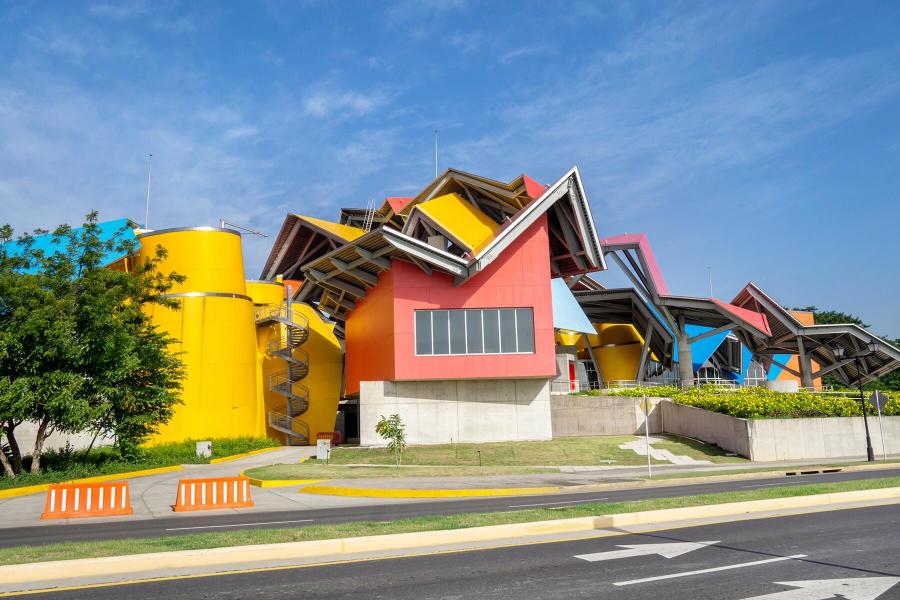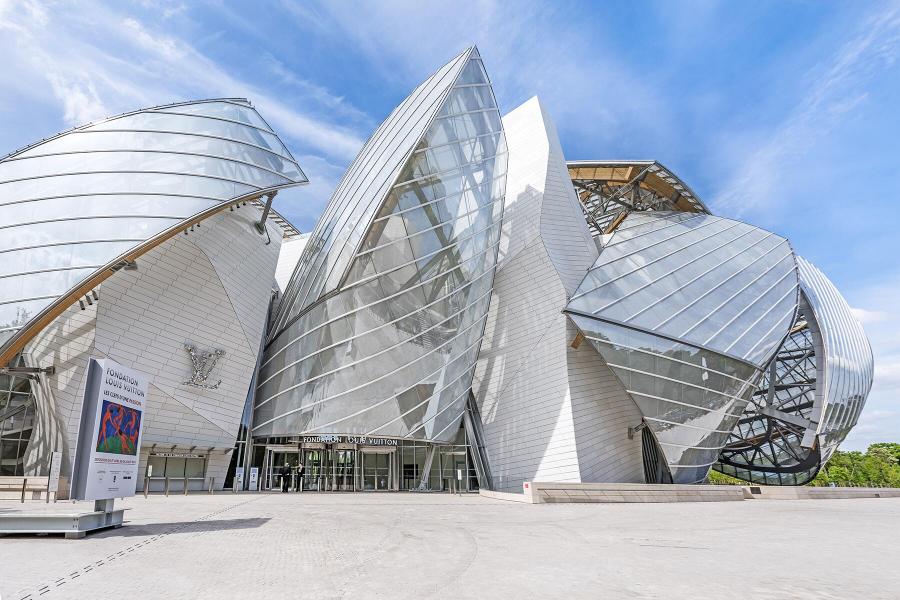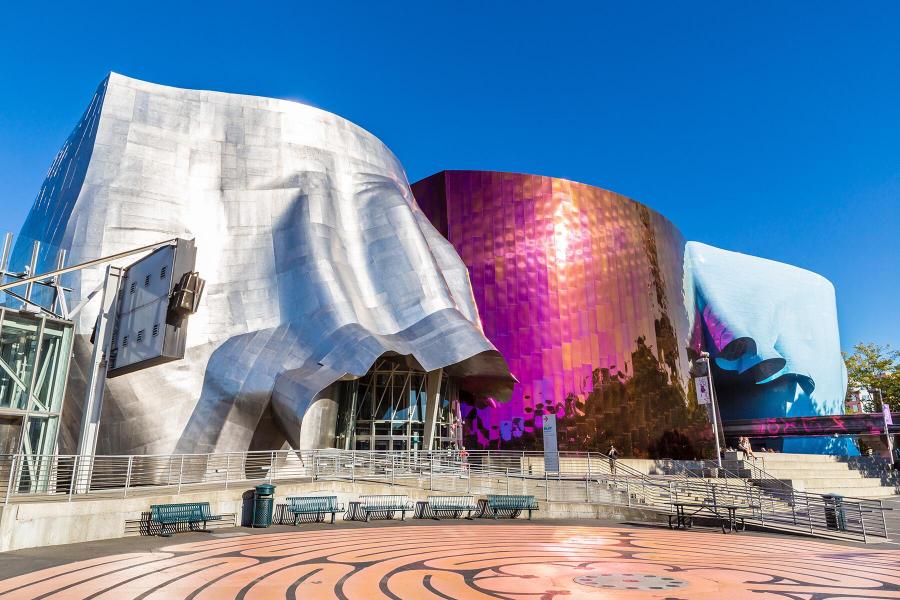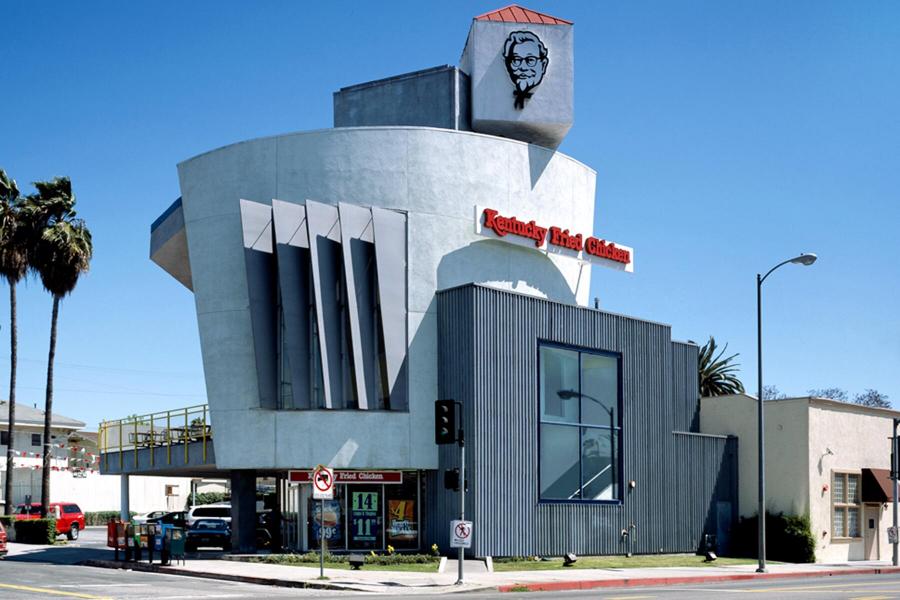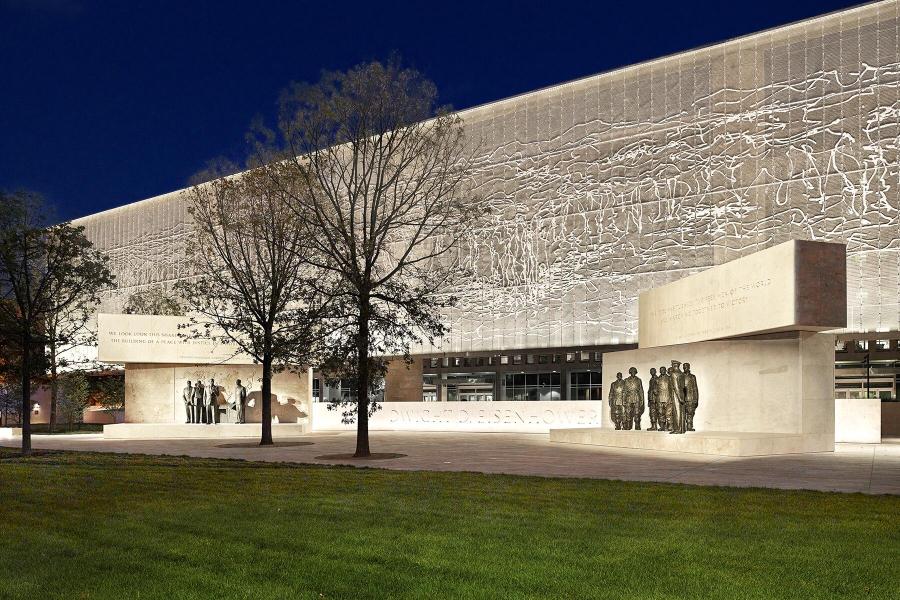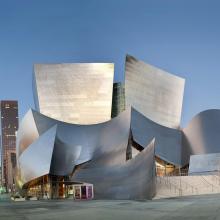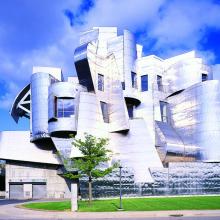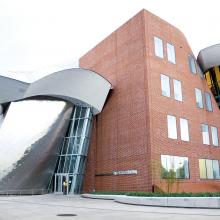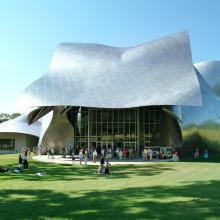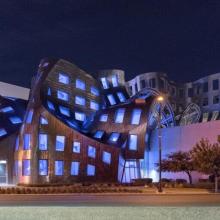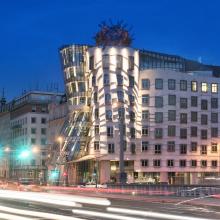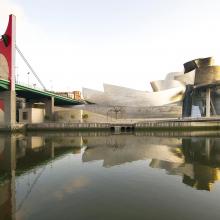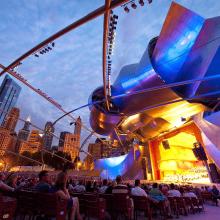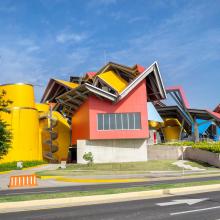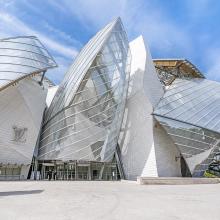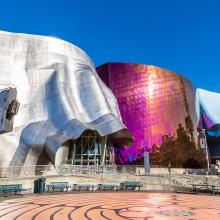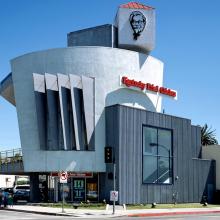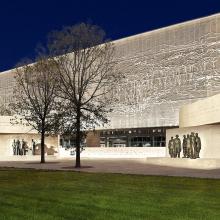13 Iconic (and Wacky) Frank Gehry Buildings
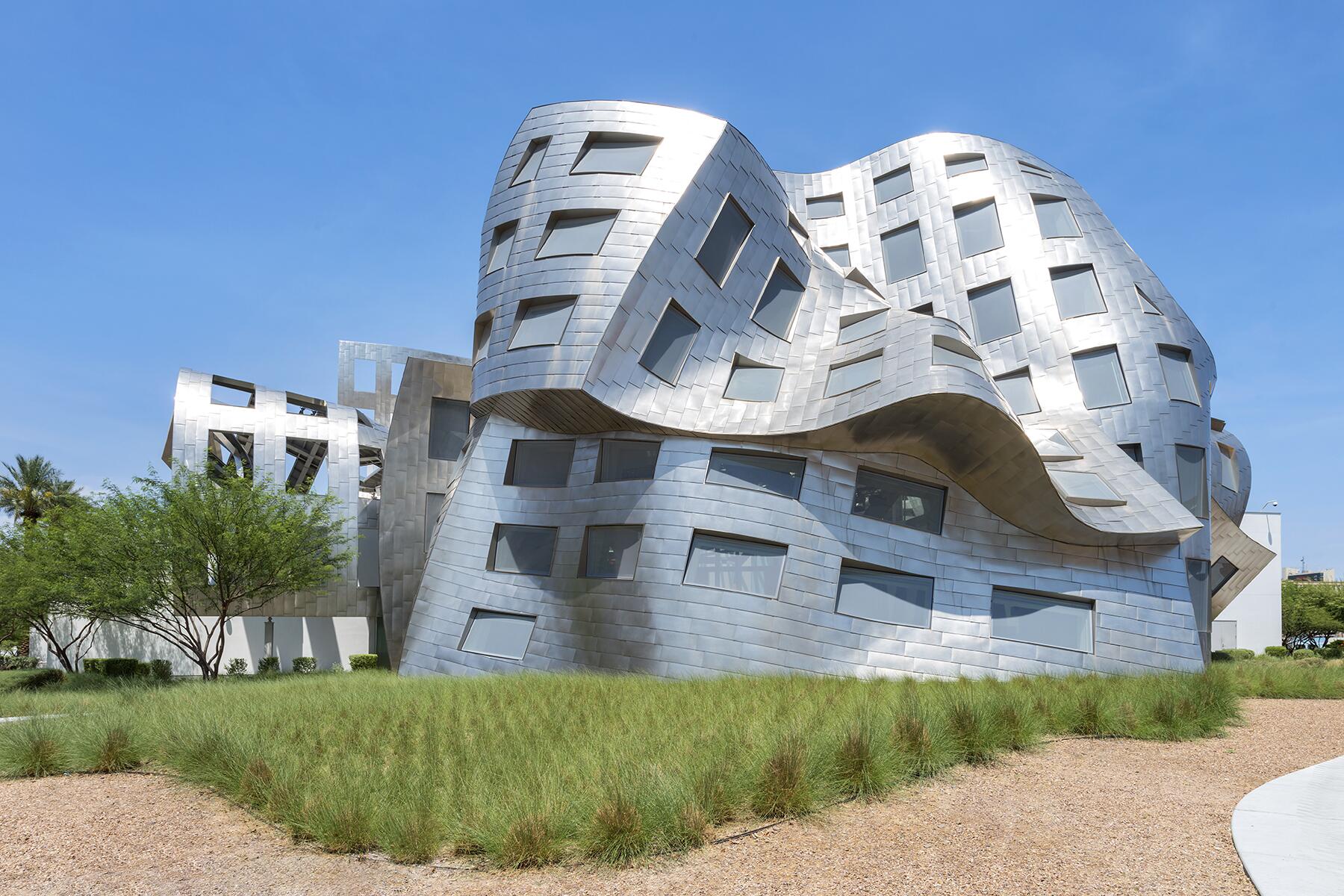
Part of the fun of Frank Gehry’s designs is trying to figure out what they are, like puffy clouds in the sky. Don’t worry—there’s no correct answer.
You know a Frank Gehry-designed building when you see it: billowing waves of metal, fragmented blocks of steel, playful whimsy with light and air—that’s all him and his deconstructivist ways. Originally staking his claim as a furniture designer, Gehry jumped into the world of architecture in the late ’70s, with his first work being his own home in Santa Monica, California, where he still lives. He went on to make a name for himself in postmodernist design, creating more than 70 buildings to date around the world. Many of these represent some of the most important works of contemporary architecture. Here are some of his most noteworthy.
1. Walt Disney Concert Hall
Los Angeles
You can almost feel the exhilarating, sweeping music embodied in the uplifting, undulating forms of the Walt Disney Concert Hall’s facade. It’s fitting, considering this 2003 Gehry masterpiece is home to the Los Angeles Philharmonic and Los Angeles Master Chorale. During the day, the façade’s metallic panels reflect the sunlight in an ever-changing display of light; at night, they’re colored by a mosaic of city lights. The spectacular concert hall inside eschews the hierarchical balconies and boxes of traditional halls; instead, 2,265 seats in the warm-hued, Douglas-fir-enhanced space surround the stage in a show of unity. And, as in all of Gehry’s designs, it’s not just about the looks. The acoustics, they say, are pitch-perfect.
2. Weisman Art Museum
Minneapolis, Minnesota
This shiny jumble of blocks, turrets, and bays overlooking the Mississippi River looks every bit like a crumpled-up tin man. Gehry explains that the swirling steel represents an abstract image of a fish jumping up a waterfall, though he’s also said that Tibetan monasteries perched high on mountain bluffs inspired him. OK…whatever the case, the Weisman, completed in 1993 and expanded in 2011, is one of Gehry’s first buildings to experiment with the curvilinear steel design that has become his trademark. Don’t miss its striking, sunlit, stark-white interior, filled with a sampling of the museum’s 20,000-piece collection of fine art. The New York Times has called the museum the “five best rooms for art viewing in the world.” Architecture and art—now that’s a winning combo.
3. Peter B. Lewis Building, Case Western Reserve University
Columbus, Ohio
Resembling waves crashing over a tawny beach, the Lewis Building’s futuristic rippling, steel-and-brick exterior belies the potential banality of a management school hunkering inside. Maybe it’s a subliminal statement that business education at this Case Western Reserve University facility is more exciting than it seems? Gehry designed the building in 1996, and sure enough, the building, which opened in 2002, excels in unconventional creativity and innovation. The open interior, for example, is designed for spontaneous communication and idea-sharing (an intentional maneuver to have faculty and students bumping into each other “coincidentally”). Considered radical at the time, it’s an example of how architecture can contribute to the renaissance of a school—and perhaps even an entire university.
4. Richard B. Fisher Center for the Performing Arts, Bard College
Annandale-on-Hudson, New York
Resembling a cubist lady sporting a grand, shiny derby hat—or perhaps even a theatrical mask—the Fisher Center for the Performing Arts sits by the Hudson, the sunlight glinting off its undulating, stainless-steel surfaces. Inside, you’ll find a 900-seat performance hall for concerts, opera, and dance; a 200-seat theater; and state-of-the-art studios. Perhaps the coolest fact is that the concert hall resembles a lyre, with Gehry-designed “scribbles” on the wall for better acoustics. The budget for this architectural masterpiece, completed in 2003, was a “mere” $62 million, forcing Gehry to cut corners, including a plain backside. But you’d never know it, given the extravagant facade. That’s the magic of Gehry.
5. Lou Ruvo Center for Brain Health
Las Vegas, Nevada
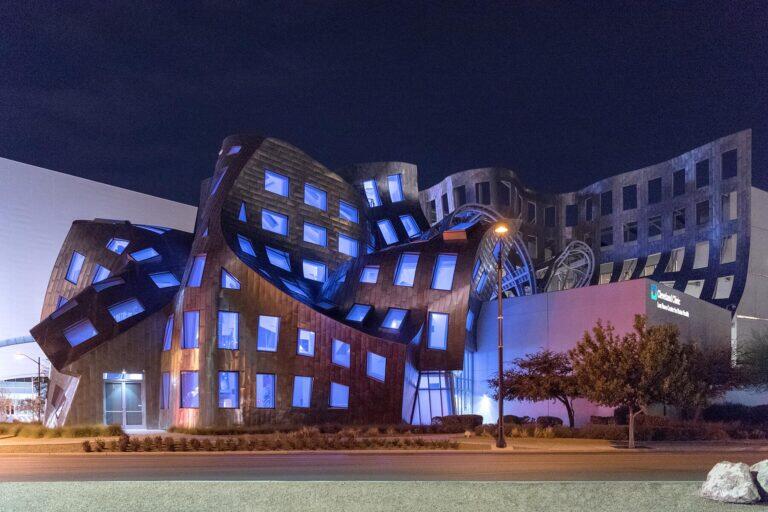
The story goes, Gehry had no interest in designing a building in Las Vegas, for fear it would become yet another larger-than-life theme. But when Larry Ruvo, a beverage entrepreneur, presented him with the opportunity to design an Alzheimer’s research center that would also help revitalize downtown Las Vegas, Gehry agreed—as long as Huntington’s disease was included in the medical mandate as well. The result? A topsy-turvy facade resembling a whimsical cartoon town, in Gehry’s signature stainless steel. Inside, there are two spaces: a simple and functional medical building with curved passages to assure patient privacy, and, connected by a breezeway, the stainless-steel Keep Memory Alive Event Center, where fundraising events take place. Douglas-fir doors, trim, and furniture create a warm, welcoming feel. The message is clear: The Lou Ruvo Center is serious about curing disease but also cares about its patients.
6. Dancing House, Prague
Czech Republic
You don’t need much of an imagination to see the dancing couple depicted in Gehry’s Tančící dům (Dancing House) in Prague. Indeed, the 1996 building, housing the offices of the Dutch insurance company Nationale-Nederlanden, comprises a pair of shiny, deconstructivist towers—one straight, one curvy—that look every bit like, well, “Frank and Ginger,” which the building is sometimes dubbed for the famous dancing duo. The building, executed by Václav Havel, the dissident playwright who grew up next door and went on to become the country’s first democratic president, envisioned a social and cultural center on the spot. That never came to be, but the importance of the postmodernist landmark amid the city’s baroque, Gothic, and art nouveau architecture is striking.
7. Museo Guggenheim Bilbao
Bilbao, Spain
Perhaps the most famous of Gehry’s buildings, the Guggenheim Bilbao in northern Spain sits on the edge of the Nervión River, a far cry from the staid neoclassical structures long reserved for art museums. No way. This wavy, curvy ode to deconstructionism shimmers with its glass-and-silver titanium elements, loosely resembling a ship with sails catching the changing sunlight. Inside, 19 galleries showcase 20th-century and contemporary Spanish and international artists. When it appeared in 1997, this audacious, cutting-edge structure singlehandedly pulled the once-industrial city from the brink of irrelevance to become a major tourist draw (over 4 million people visited the first year), sparking a building boom—and the phrase, “Guggenheim effect.”
8. Jay Pritzker Pavilion, Millennium Park
Chicago, Illinois
Look! It’s a headdress! No, it’s storm clouds! No, it’s flower petals! Whatever you think it looks like, Gehry’s revolutionary outdoor concert venue rises in gleaming stainless-steel glory as the centerpiece of Chicago’s Millennium Park. This state-of-the-art stage serves an audience of 4,000 sitting, with an additional 7,000 accommodated on the Great Lawn. And this is where Gehry’s genius crystallizes: Stainless-steel ribbons reach out above the audience—a stylish audio system disguised as modern art so that everyone enjoys concert-hall acoustics without any potential techno clunkiness ruining the experience.
9. Museo de la Biodiversidad
Panama City, Panama
Perched on the causeway at the entrance to the Panama Canal, the boldly-hued plates of the BioMuseo’s roofline crumple and clash, as if they are mimicking the tectonic plate collision that occurred here 4 million years ago, thereby uniting North and South America. You see, this museum, which opened in 2014, is all about Panama’s diverse flora and fauna—brought to you by said tectonic collision. Inside, eight permanent galleries showcase 10,000 square feet of interactive exhibits exploring biodiversity.
10. Fondation Louis Vuitton
Paris, France
It rises above the Bois de Boulogne’s greenery like a multi-sailed ship floating above its express-built reflecting pool, delivering art and culture to the throngs who come aboard. Unlike most of his other works, Gehry’s “sails” are made of glass, not metal, creating an ethereal effect inspired by Paris’ historic (and glass) Grand Palais. Eleven art galleries of varying sizes, tucked into a network of steel struts and wooden beams, feature the works of Koons, Basquiat, Gilbert & George, and other contemporary geniuses. And if you still didn’t catch who the supporter behind this work, the big Gehry-designed LV monogram at the front door, branding the building like one of its several-hundred-dollar handbags or bottles of perfume, will clue you in. (It’s LVMH, the luxury-good multinational headed by Bernaud Arnault, the richest man in France and owner of the art collection.)
11. Museum of Pop Culture
Seattle, Washington
It’s said that when Gehry sought a design that would evoke rock ’n’ roll for this museum founded by Microsoft co-founder Paul Allen, he sliced up several electric guitars and used them in an early building design. The result? This shimmering, steel-and-aluminum, gold-cream-and-hot-pink conglomeration standing in the shadow of Seattle’s Space Needle. Some call it garish, while others simply call it the “Blob.” Whatever the case, the structure, dating from 2000, is a fitting space for the Museum of Pop Culture (or MoPOP), where music history, science fiction, fashion, video games, and more converge.
12. Kentucky Fried Chicken
Los Angeles, California
OK, so this one was designed by Gehry’s pupils Jeffrey Daniels and Elyse Grinstein, not Gehry himself, but it’s wacky enough that we needed to include it on the list. Their avant-garde design takes the traditional KFC style of architecture and spews it through Gehry’s deconstructivist sensibilities, creating what’s certainly the craziest fast-food chicken restaurant in the country, if not the world. The two-story building, finished in 1989, resembles a pile of geometric blocks crowned with a small red-roofed cube boasting a smiling Colonel visage—the ensemble of which some say resembles an oversized chicken complete with beak and comb, while others deem it a gigantic bucket. Whatever the case, the postmodernist vibe does not affect the fried chicken on sale inside, which is the same good, old-fashioned fried chicken that KFC made its name on and is reliably sold everywhere.
13. Dwight D. Eisenhower Memorial
Washington, D.C.
You might walk by the brand-new Eisenhower Memorial in Washington, D.C., and not even remark on the fact that Gehry had anything to do with it. It’s quite sedate, actually, a small public park in the heart of working Washington, with bronze sculptures standing among two tableaux that highlight the 34th president’s career achievements. Perhaps the only tip-off you have is the giant metal tapestry above depicting the Normandy cliffs, originally sketched by Gehry as frenzied squiggles. The memorial, commissioned by Congress, is especially magical at night, though perhaps the most touching piece is the sculpture to the side of a boy Eisenhower gazing at the images representing what would be his most significant achievements—peering into the future, so to speak.

